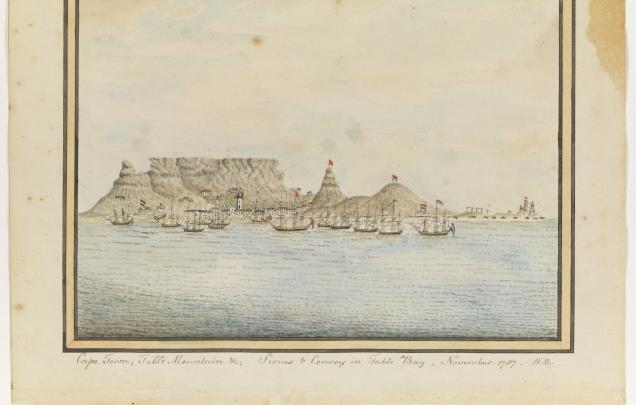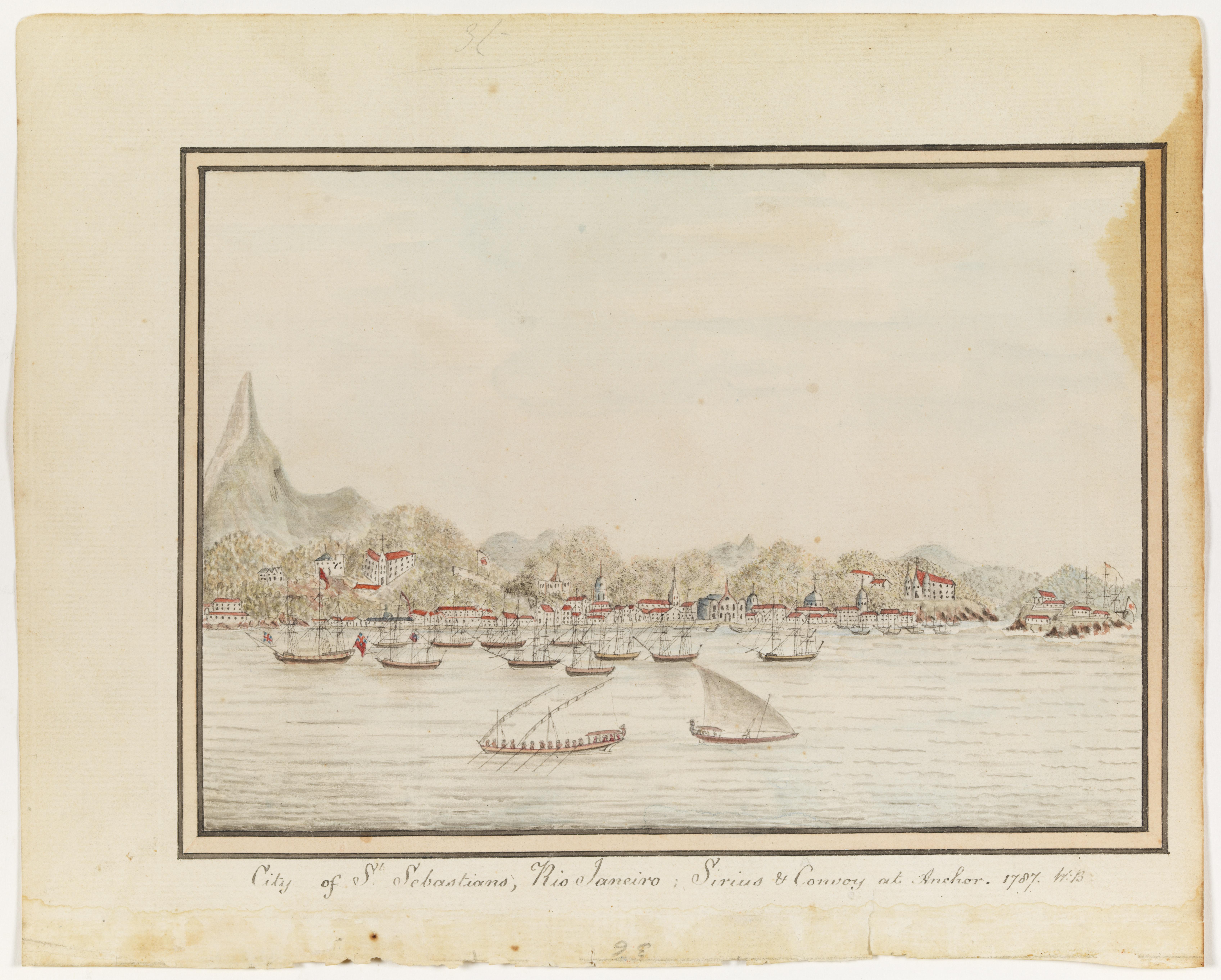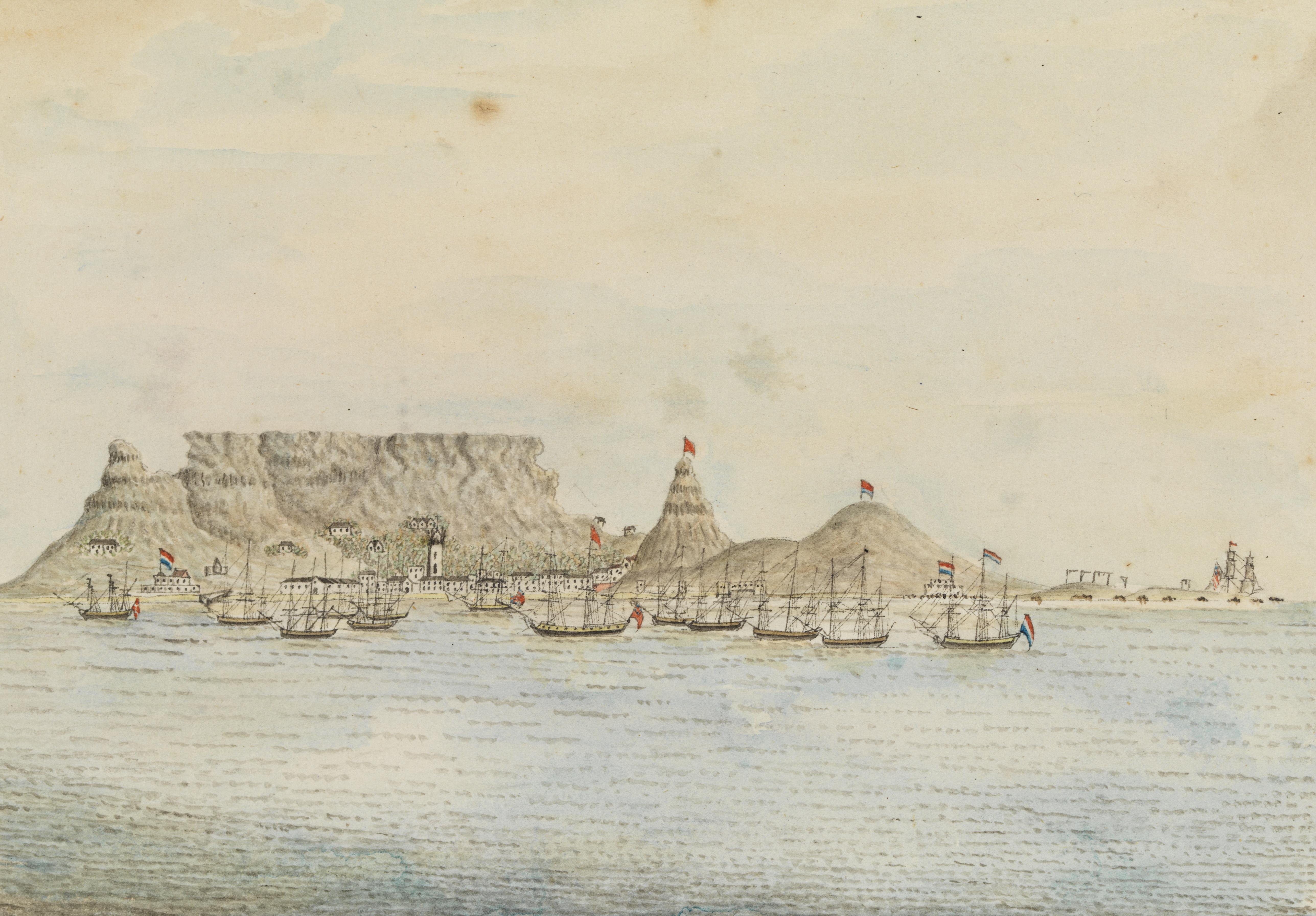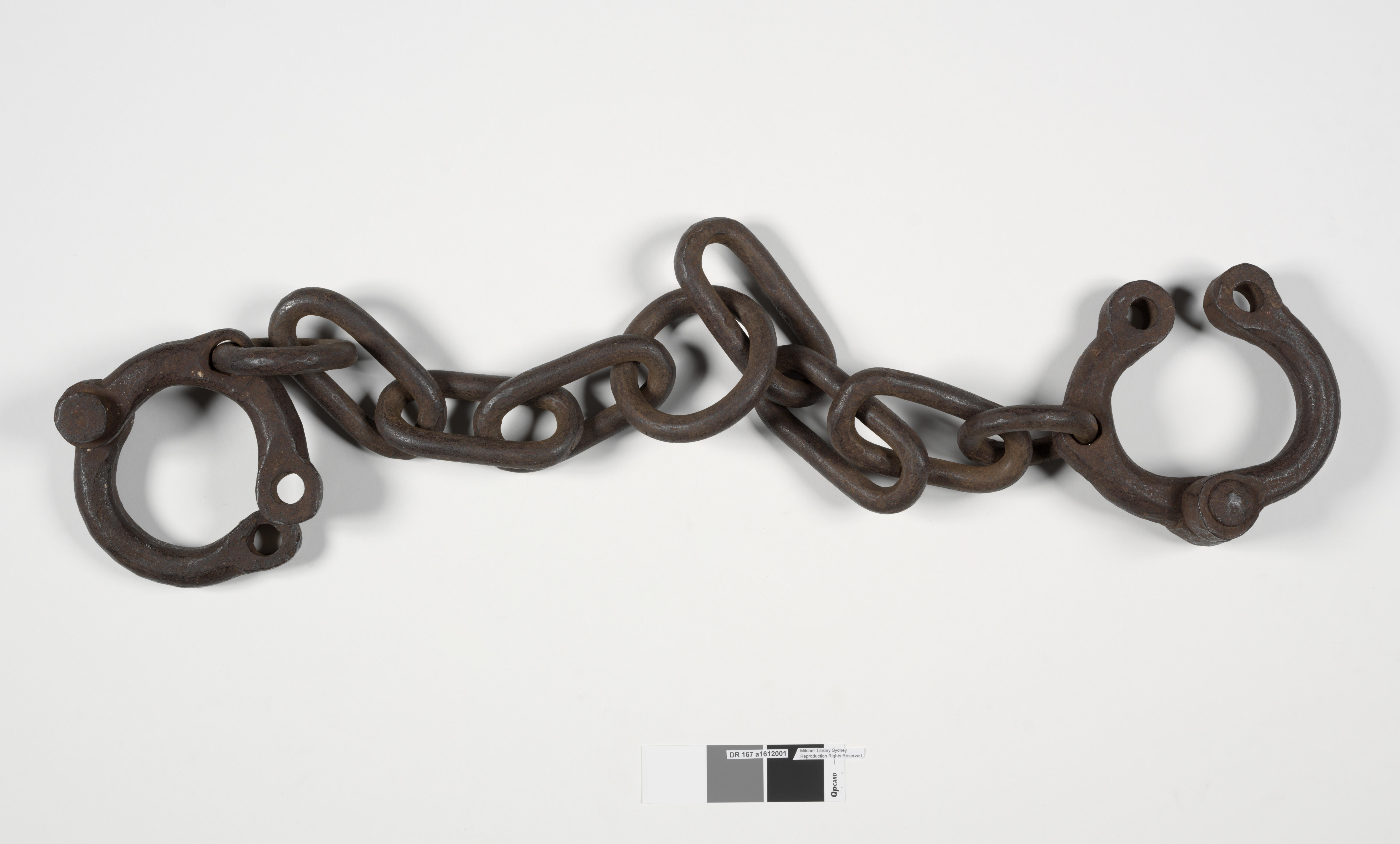Are we there yet?
Students explore the varied convict experiences onboard the ships of the First Fleet.
This is the student activity 1 of 7 of the Journey of the First Fleet learning activity.

What were they thinking?
Now you know how far the ships travelled and how long the journey took: but how can you know what the experience of being on these ships felt like for the everyone on board?
The convicts onboard the ships were leaving their families and friends behind. While they were waiting in Portsmouth for the ships to depart, the few convicts who could write were penning letters home. The majority of the convicts were illiterate: they couldn’t write a letter to say goodbye, or read about where they were going. If they couldn’t write, they would get somebody who could to write down what they said instead. These letters were being inspected by a naval officer, Watkin Tench, before being posted.
Read what Captain Watkin Tench found written in the convicts’ letters in May 1787:
Their constant language was, an apprehension of the impracticability of returning home, the dread of a sickly passage, and the fearful prospect of a distant and barbarous country.
Discuss those three concerns.
Answer this question:
- How would you feel in their circumstances?
Did you know? Very few convicts would ever return home to Britain.
What were they eating?
The journey to New South Wales took eight months, and although they would sometimes stop at other ports along the way and get fresh supplies, food had to be able to last a long time. One type of this long-lasting food was called bread - this was not bread as we think of it however, but a hard, dry biscuit. This had been a staple for sailors for hundreds of years. It’s also often called ship’s biscuits. These ship’s biscuits were made from wheat or barley, water and salt, and baked brick hard. Everyone on the ships would have eaten it – or tried to. It was very, very hard to bite, particularly if you were trying to chew it with decaying teeth. They would leave the bread out to get stale and soften or put liquid on it but then maggots and weevils would get into them. Extra protein!
Read Lieutenant Ralph Clark’s thoughts about the bread - which he calls pancakes, onboard the ship Friendship on 1 January 1787:
I am going to sit down to the Poorest dinner that ever I Sat down too on a New Years day a pice of hard Salt Beef and a few musty Pancakes.
Define the meaning of the word musty.
Research salt beef. [Answer in Additional Information.]
Answer these questions:
- What do you think the convict reaction was to eating this kind of bread?
- How could you eat this hard bread without breaking your teeth? [Suggestions listed in Additional Information.]
- How long can ship’s biscuits be kept for?
- Would you like a special dinner of salt beef and ship’s biscuits?
Bake some ship’s biscuits and try eating it in your classroom.
First Fleet Bread Recipe
2 ½ cups wholemeal flour
I cup water
1 teaspsoon salt (optional)
*
Mix ingredients.
Knead the dough.
Flatten the dough to about 1cm thick.
Place on a greased baking tray.
Cut into square biscuit shapes.
Poke small holes in the dough with a skewer or fork.
Bake in a 160°oven until hard.
Even after it was cooked, it would often be cooked several more times in the oven. That would truly dry it out!
Ralph Clark called the bread musty. What other adjectives would you use to describe it?
What were they doing?
There was some fun to be had onboard ship. Read what Marine John Easty on the Scarborough recorded on 2 January 1788:
…this Night the Convicts Made a play & Sang many Songs.
Some of the convicts on the First Fleet only had the clothes they stood up in, and had been wearing these in the gaols and hulks before that. Their clothes were so threadbare, dirty and lice-ridden that an order was made for the clothes to be burnt.
Look at the painting, below, of the First Fleet’s stop in Rio de Janeiro, Brazil in September 1787.
In Rio de Janeiro in September 1787 Governor Arthur Phillip recorded that he bought 100 bags of rice in ‘strong’ sacks that were then to:
…be used hereafter in cloathing the convicts, many of whom are nearly naked.
That sounds uncomfortable! The sacks were made of thick cotton, that was rough and coarse. The fabric in sacks is usually not meant for clothing, although it is a step up from being naked. Convicts were also sewing clothing and gloves for the Marines during the voyage.
Read Surgeon Arthur Bowes Smyth’s experience on the Lady Penrhyn on 29 November 1787:
This day a shark… seized a pair of white trousers of mine which were towing astern.
Clothing onboard ship was washed in sea water, sometimes tied to a rope dangling in the backwash of the ship’s stern. Let’s hope they rinsed the clothes in freshwater afterwards because you get awful chafing when you wear clothes washed in salty water! Sadly, on one occasion, one of the convict men on the Charlotte fell overboard when he was trying to collect the dried washing from the bowsprit of the ship…and drowned.
Answer these questions:
- What part of the ship is the stern and bowsprit?
- Are you surprised by any of this information? Which parts?
How were they feeling?
Read Lieutenant Ralph Clark’s diary entry for 19 May 1787, just six days into the journey (!) on the Friendship, revealing that he felt:
exceedingly Sea Sick.
Define the word exceedingly.
Answer this question:
- Considering that Ralph Clark had a career in the Navy and was used to being on a ship at sea, how do you think the convicts were feeling?
With all the rolling motion of the ship in rough seas it was not just seasickness they suffered.
Read this account of a convict from Surgeon Arthur Bowes Smyth on the Lady Penrhyn on 1 July 1787:
This day Mary Love, one of the Convicts…fell down…& broke two of her ribs & otherwise very much bruis'd herself.
Look at the painting of their stop in Cape Town, Cape of Good Hope, South Africa in October 1787.
Read what Surgeon Arthur Bowes Smyth, on the Lady Penrhyn, had heard from Surgeon John White on the ship Charlotte, in October 1787 at the Cape of Good Hope:
…he informed me that upwards of 30 had been very ill wt.[with] a putrid fever & Dysentery onboard… that he expected the death of 3 of them this day.
Research the symptoms of putrid fever and dysentery.
Answer this question:
- Why do you think people became ill on these ships?
Read Captain John Hunter’s record of the month-long stop at Rio de Janeiro in August 1787:
Convicts have also had a proportion of Oranges with their other provision, they are in such great plenty that the Expense attending the purchase of a few to each individual each day is too inconsiderable to be Notic’d.
Answer these questions:
- Why were convicts being given oranges?
- How does John Hunter justify giving oranges to the convicts?
How were they living?
Space was limited onboard and the conditions were challenging.
Read Surgeon Arthur Bowes Smyth’s record of the rough seas on 31 December 1787:
many of the Women were wash'd out of their Births by the Seas… the Sea was mountains high, sometimes it seem'd as if the Ship was going over.
Answer this question:
- How do you think the convicts were impacted by these circumstances?
Read about the discovery made by Lieutenant Philip Gidley King, onboard HMS Sirius in September 1787, when the carpenter found:
…a rotten piece of Wood, which was broke off from one of the Top Timbers, on inspection we found that not only the top Timbers were rotten, but also that many of the futtocks were in the same condition.
Define the words rotten and futtock.
Answer these questions:
- What is the significance of rotten wood on a ship?
- How do you think convicts would have felt if rotten timbers had been discovered on their ships?
- How would you feel on a ship like this in large waves?
Read Surgeon John White’s journal entry on 18 July 1787 about the conditions onboard the Alexander:
The illness complained of was wholly occasioned by the bilge water, which had by some means or other risen to so great a height that the pannels of the cabin, and the buttons on the clothes of the officers, were turned nearly black by the noxious effluvia. When the hatches were taken off, the stench was so powerful that it was scarcely possible to stand over them.
Define the terms bilge water and noxious effluvia.
Answer this question:
- How do you think the convicts were feeling as the walls inside the ship turned black and they had to breathe the noxious effluvia?
How were they punished?
All the male convicts were in leg irons when they embarked but Governor Arthur Phillip ordered that they all be freed for the journey – a decision not supported by all of the officers! The convicts were keen to escape from the ships to find freedom. On 18 May 1787, only five days after leaving England, a plan by some convicts to seize the ship Scarborough using the weapons they smuggled onboard was uncovered.
Read Marine John Easty’s diary entry on 18 May 1787. (Note that dowble means ‘double’.) The two convict ringleaders were punished with:
with 2 dozen Lashes and Some dowble irons.
Read the description by Captain John Hunter of what happened to John Powers, a convict who tried to escape when the Fleet was at Teneriffe in the Canary Islands in June 1787. He had stolen a small boat and got away but was caught the next day, when he was:
punish’d & put in Irons.
He was not deterred by his time in irons though, as four months later he attempted to lead a mutiny on the ship Alexander!
Read Marine John Easty’s description of what happened on 6 October 1787. Four crew joined with:
the Convicts with knives and Pistrols to take the Ship from the marines.
Read how Lieutenant William Bradley tells the story about the mutiny:
We found that some part of the Crew of that ship had leagued themselves with the Convicts to furnish them with materials to endeavor to effect an escape at the Cape of Good Hope & that one of them had already furnish'd them with an Iron Crow for the purpose… The ringleader… was then very heavily Iron'd & now stapled down to the deck.
Now, read Surgeon Arthur Bowes Smyth’s account of the convict women on Lady Penrhyn on 10 December 1787:
…it frequently becomes indispensably necessary to inflict Corporal punishment upon them. Upon any very extraordinary occasion such as thieving fighting with each other or making use of abusive language to the Officers, they have thumb Screws put on -- or Iron fetters on their wrists… and sometimes their hair has been cut off and their head shaved, which they seemed to dislike more than any other punishment they underwent.
Define the term corporal punishment. Discuss.
Investigate the difference between thumb screws, iron fetters and irons.
Look at the leg irons. These leg irons are from a later convict era but are similar, if not the same, as those used in 1788.
Answer these questions:
- What parts of the body were thumb screws, iron fetters and irons placed on?
- As the leg irons were made of heavy cast iron, how do you think it felt to wear them? What about wearing double irons?
- Why did the convict women dislike having their head shaved more than any other punishment?
- What are some of the challenges if you were wearing irons, like John Powers, that were stapled down to the deck?
Research John Powers and the attempted mutiny on the Alexander on 6 October 1787 to find more information.
Choose three emojis to represent the feelings of the convicts in different circumstances and explain why you chose them.
Perform a role-play to show what convict shipboard daily life was like while on the First Fleet. Consider:
- What do you eat?
- What do you do?
- What do you talk about?
- What happens when there is bad weather?
- How do you feel about being on this ship?


